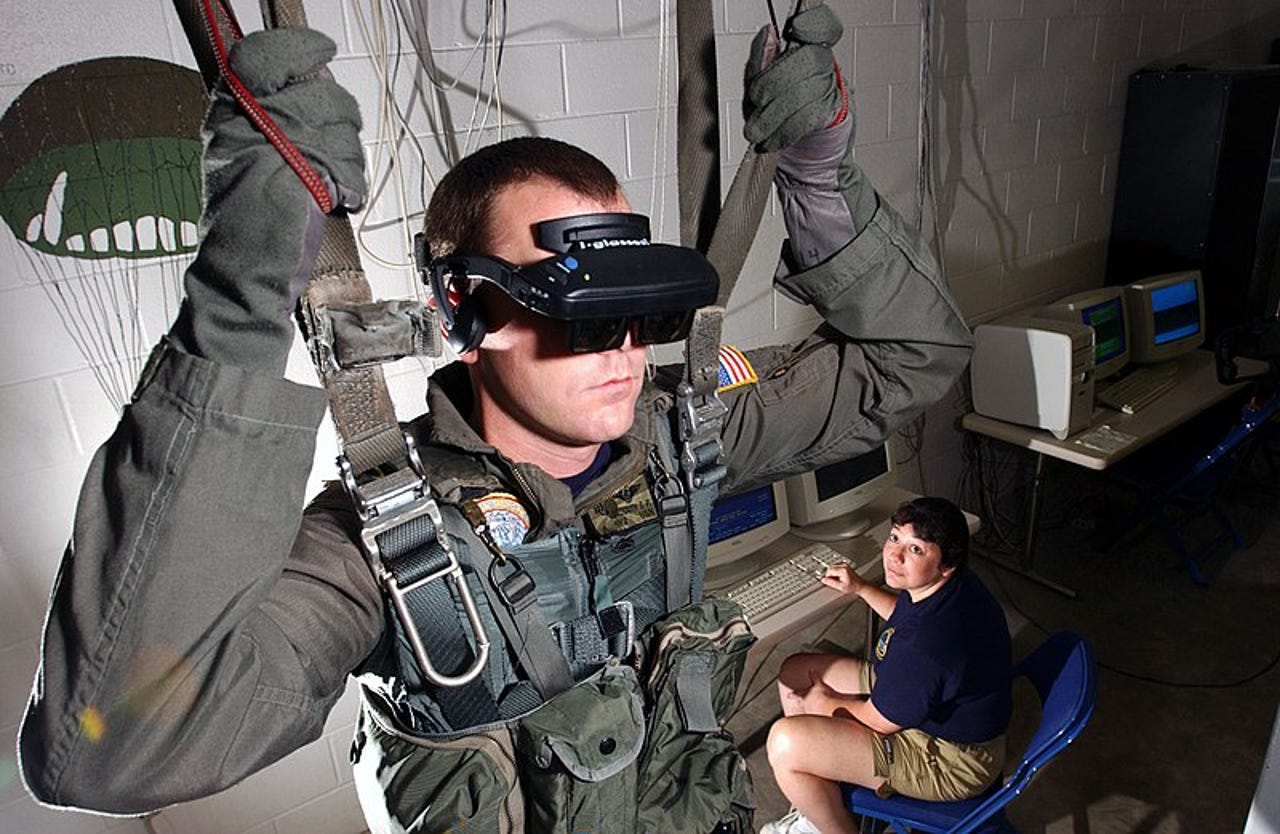Market rift: Military use of AR/VR skyrockets


As AR/VR struggles to gain adopters in consumer applications, the military has quietly but aggressively deployed mixed reality technologies in training and on the battlefield. Over the last couple years, Army soldiers have been learning urban combat techniques in so-called Synthetic Training Environments that accurately reflect foreign cities while tactical augmented reality has made its way into helmets and military vehicles.
According to a recent report titled "Military Augmented Reality Market to 2025," the AR/VR defense market will be worth $1.79 billion by 2025, up from $511 million last year. At that rate of growth, the military is one of the early sectors to fulfill the hype of commercial mixed reality.
The reasons have to do with the growing cost efficiency AR/VR and the simultaneous difficulty of simulating combat realistically using tangible assets.
"Faced with emerging threats, readiness gaps, and ongoing budget challenges, military organizations are embracing commercial technologies to support simulation and training," John Burwell, VP of Business Development at Bohemia Interactive Simulations (BISim), a VR company serving the defense market, told me.
The defense industry, it turns out, is harnessing advances first made in gaming. BISim uses game-based technology to develop low cost training and simulation software products. The products boast many of the same technical aspects you'd find in popular video games, such as "whole-earth rendering" and "pre-programmed AI behaviors."
BIS's products include a gunship crew trainer for the U.S. Air Force and virtual parachute training, among other scenario-based modules.
Simulators have long played some role in military training, but the latest generation of VR headsets coupled with the advanced physics engines that power modern games have made the technology especially well suited to combat training.
"Where today's high-end simulators rely on large and expensive display environments using domes and collimated displays," says Burwell, "next generation training systems will benefit from emerging VR and AR technologies that enable solutions that are orders of magnitude less expensive, provide higher fidelity, and offer a smaller footprint supporting training at the point of need."
In a kind of development feedback loop, Burwell predicts that the development happening in the military market will in turn make its way back into the consumer market.
"Military AR/VR solutions are driven by specific requirements to meet training objectives. For example, high-resolution head mounted displays (HMD)s are needed to support flight training where pilots need to see fine detail at a distance. Today, these requirements are met with specialized hardware. But the roadmaps of component suppliers show a path where within a few years the more expensive and esoteric technologies will become a commodity."
With rapid adoption of these technologies in training scenarios in particular, there's concern that teaching war fighters using video games could have unintended ethical consequences. Burwell believes it comes down to execution.
"To deploy AR/VR responsibly in simulation and training," he says, "trainers should provide trainees and personnel with clear objectives and context for how these tools are being used to prepare for real-world scenarios. The simulations behind these tools depict operational environments as accurately as possible and facilitate after action review, so individuals and units can understand the impact of their actions."
It's a consideration with growing importance. It's still too early to make sweeping assessments of the effectiveness of the technologies in defense applications, but it's clear AR/VR will be playing a larger role in training soldiers here and elsewhere in the years ahead.